Anytime you have a trip like this, there will be periods where things are a little boring. Unless you like looking at mile after mile of corn fields, there is not much to report on between my stopover in Oklahoma City and Indianapolis. To spare you the monotony, here are a few sights along the way you may or may not recognize.
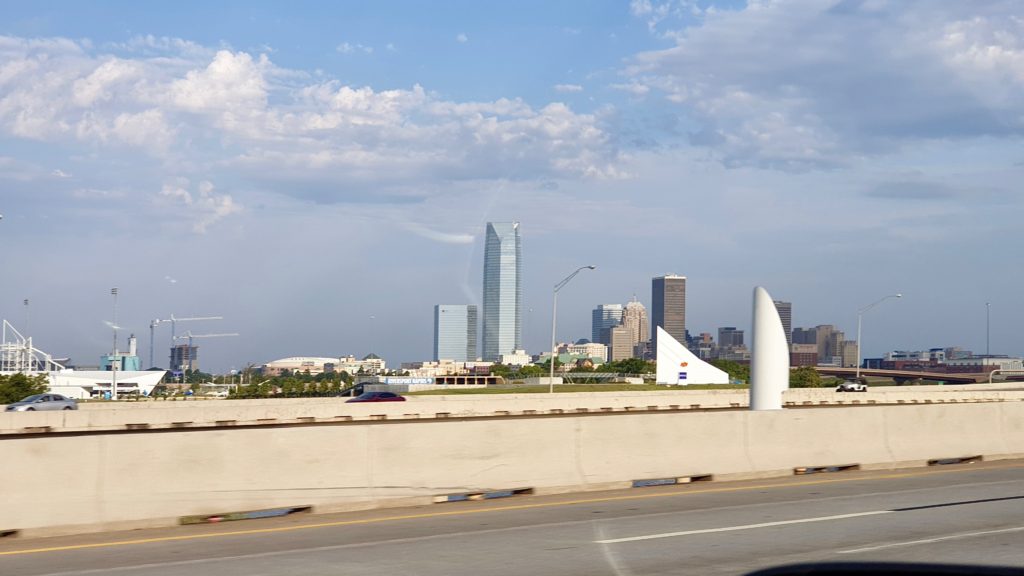
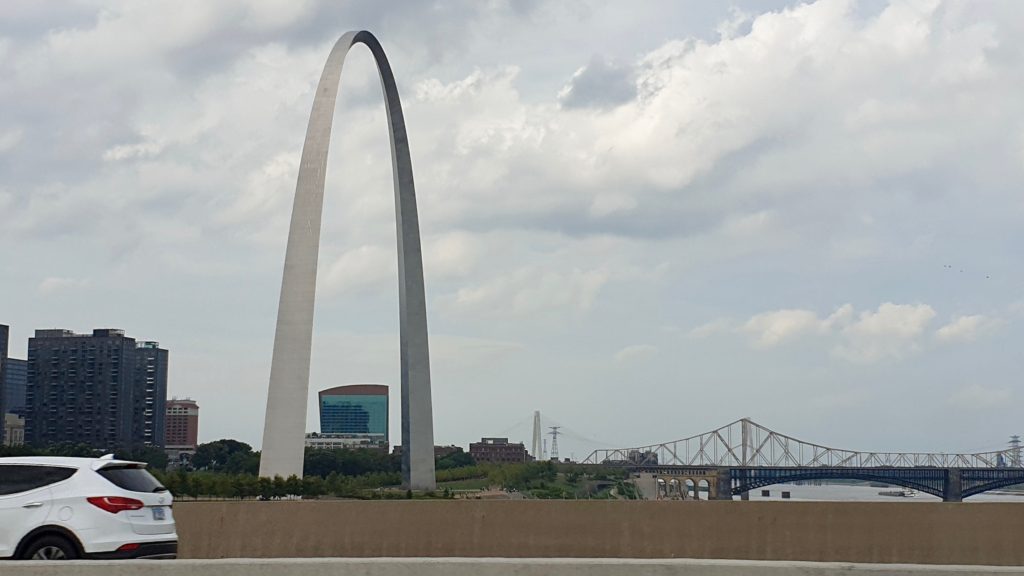
From Indianapolis, I set my sights on crossing the border into Canada for my second stopover of the trip. I’ll be spending a few days at my uncle’s house in Washago, Ontario, which is near Toronto. My original plan was to not have to cross the border on the weekend. Alas, it was a Sunday and I wasn’t about to wait around in Indianapolis. I got off to an early start to avoid getting caught in traffic. Many weekend warriors return home from Canada on Sunday afternoon. My Global Entry card allows expedited entry into the US, but does not get me anything crossing the border into Canada.
The Detroit-Windsor Border Crossing to Canada
The most direct route to my uncle’s house is to cross from Detroit, Michigan into Windsor, Ontario. That crossing is one of the busiest ports of entry on the entire US – Canada border. After crossing from Ohio into Michigan, it felt like it took forever getting up to Detroit, despite it only being about 45 miles. All while watching the wait times on the CBSA (Canada Border Services Agency) website get longer and longer.
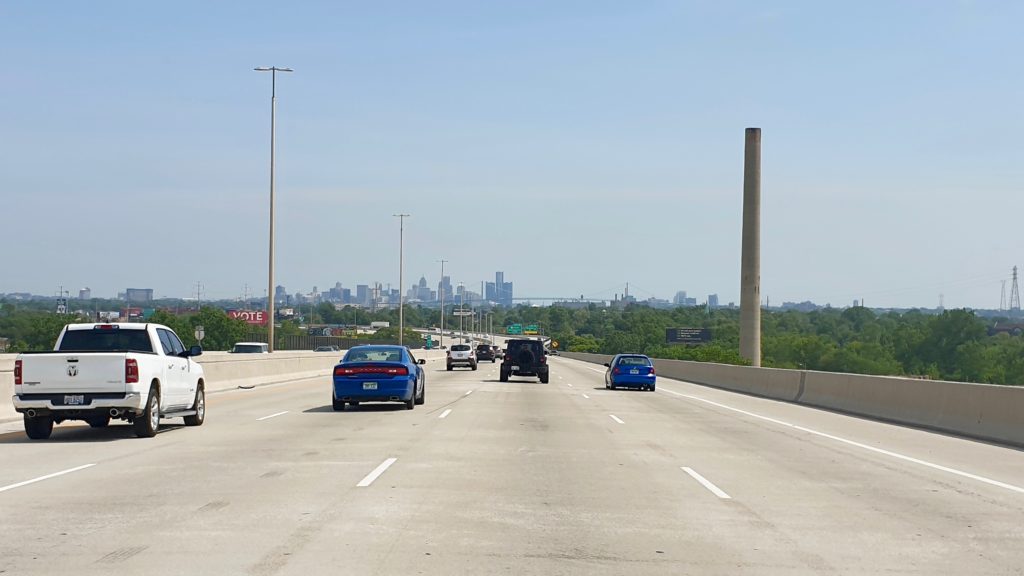
The Ambassador Bridge is the direct link between I-75 in Michigan and the 401 in Ontario. By the time I started coming into the southern suburbs of Detroit, the wait at the Ambassador Bridge was close to an hour and a half going into Canada.
Time to go to Plan B: the Detroit-Windsor Tunnel
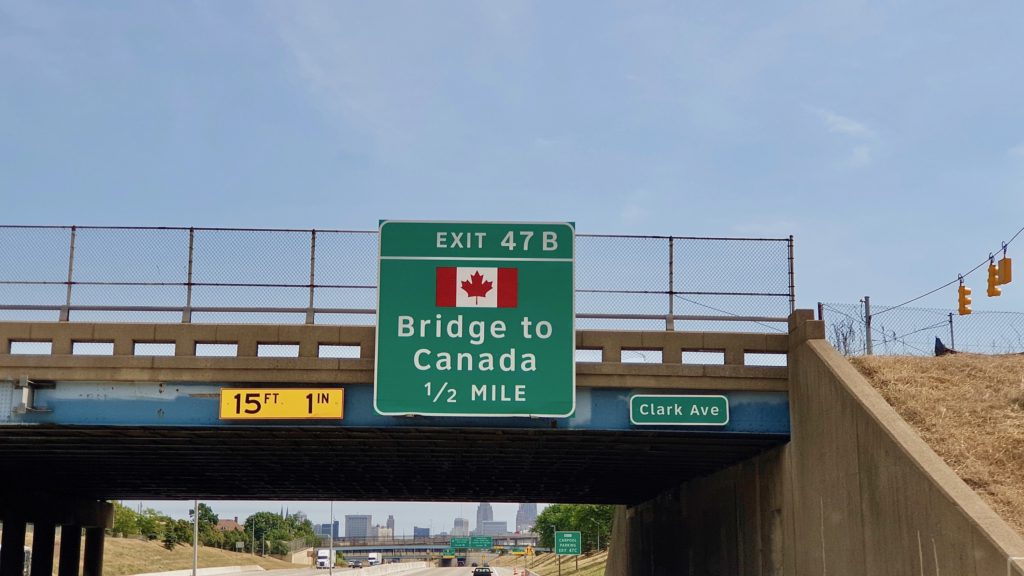
I was very happy, and a bit surprised, to see that the wait times at the tunnel were only about 10 minutes. The route to the entrance to the tunnel is disturbingly well signed. Navigating the streets of downtown Detroit was a breeze. After a short jaunt through the tunnel (a little under 1 km), you pop out in another country.
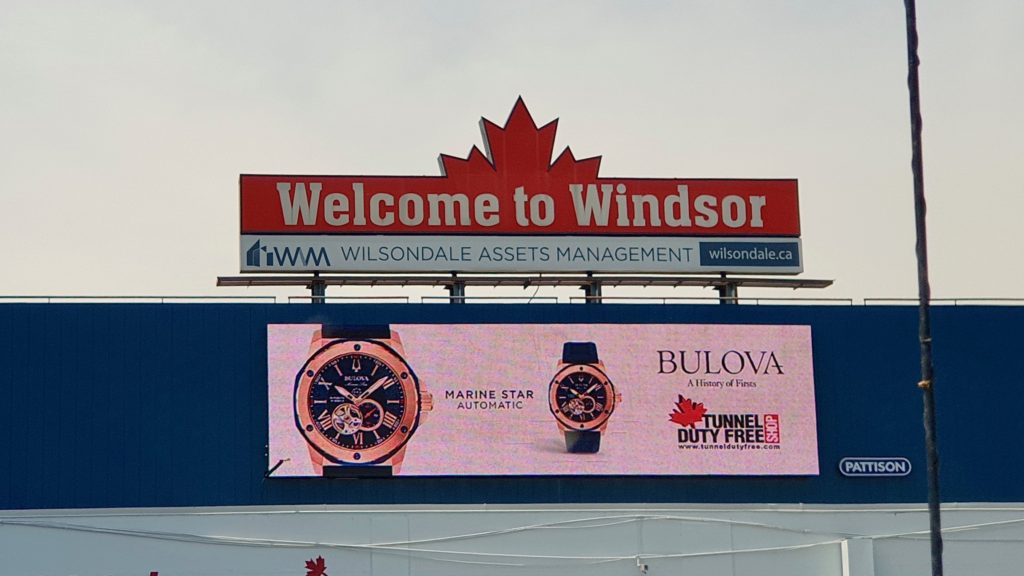
Fun Fact: The Detroit/Windsor border crossing is the only spot on the main part of the US – Canada border (i.e. excluding Alaska) where you can go south from the US into Canada
What to Expect at Canadian Customs
The process for entering Canada is very similar to entering the US. Restrictions on what you can bring into Canada are very similar to what you can bring into the US. When you pull up to the primary checkpoint, give the CBSA agent your passport. US passport cards also work entering Canada at land and sea ports of entry. Answer their questions truthfully, and be transparent. Don’t try to hide anything. Some things they may ask about include, but are certainly not limited to:
- The purpose and duration of your visit to Canada; where you plan to go
- If you’re carrying meat products or fresh produce
- If you’re carrying any weapons (guns, knives, etc) or drugs
- If you’re carrying any alcohol
- If you have medication or prescription drugs
- Do you have any past criminal convictions? If the answer to this question is yes, you will likely be denied entry into Canada unless you file the proper paperwork ahead of time
Onward into Canada
After a short 10 or so minute wait in line and a brief, friendly stop at the primary customs checkpoint, I was on the streets of Windsor. I ended up leading myself a bit astray trying to get around a couple street closures. When you leave the customs area, you’re actually facing back towards Detroit. I didn’t realize that, but I quickly got my bearings straight. Once I put the Detroit skyline in the rear view mirror, it was a quick and painless drive to get out to the 401.
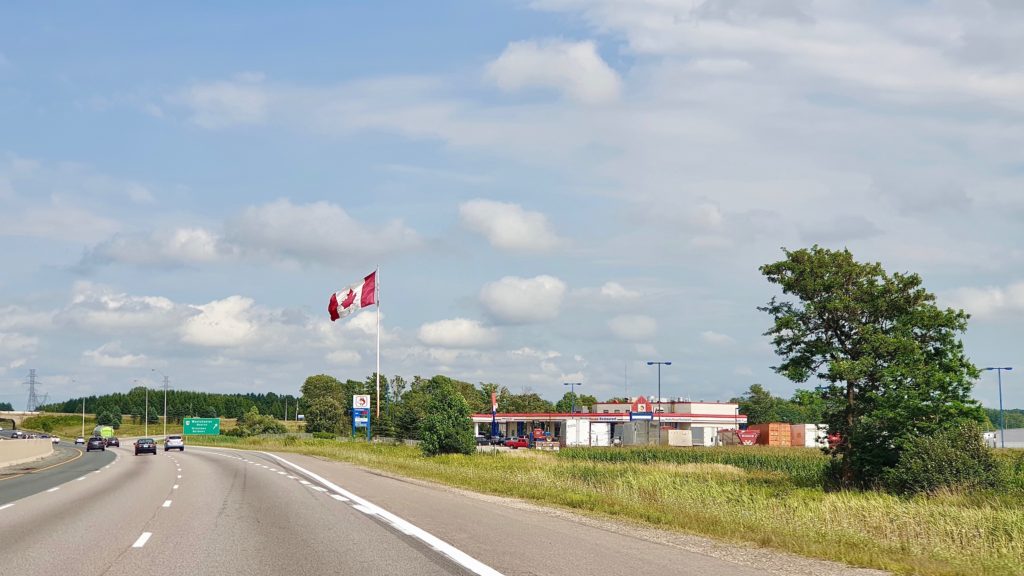
Other than a half-hour delay due to an accident in a construction zone, I had a smooth run up the 401 to my uncle’s house. That accident was amazingly the only slow-down on the entire trip, other than a few short at customs. I know my uncle has some hiking and canoeing planned and I’m really looking forward to being able to do it when everything’s not buried under 2 feet of snow.
Funny Addendum to this Leg of the Trip
One pattern I noticed on this trip is that whenever I crossed an international border, something really funny and unexpected happened. This one happened at the first gas station I stopped at in Canada. I swiped my credit card at the pump and entered my zip code. I was getting ready to select the fuel type and put the nozzle in the filler to fill the tank when the pump asked another question that caught me completely off guard.
How much fuel do you wish to purchase?
The kicker was that you could only select a dollar amount, you couldn’t select a volume. And there was no “Fill It Up” option. Now I start doing the math in my head that I’ve done time and time again. The tank was a little over 1/4 full. I knew pretty much the exact number of gallons I needed to fill it up. From there, it’s easy to figure out how many dollars it is.
The Metric System Unexpectedly Got the Best of Me
I looked up at the price on the electric sign in front of the gas station and it immediately dawned on me that my math had gone awry. Oh crap, I’m in Canada. Those prices are in liters, not gallons. I start to do the conversion in my head. By now, it had thrown me enough curveballs to slightly knock me off my game. I’m trying to do the (very) approximate conversion of 1 gallon = 4 liters minus a little bit in my head, but the numbers just weren’t coming out right. For some reason the fact that I was paying in Canadian Dollars instead of US Dollars thre my logic off. The currency type was irrelevant because it stayed the same throughout the calculation.
Now, here’s where the rational person would pull out a calculator to do the conversion, but I don’t admit defeat that easily. After a few more attempts at the conversion and getting unnecessarily thrown off by an exchange rate that I didn’t know (or need), I got a number that sort of made sense and sort of didn’t. I had been on the road all day (remember this day started back in Indianapolis) and eventually just said “Screw It” and picked my best guess at the dollar amount: $50 Canadian.
It’s Better to Be Lucky than Good
After pumping the gas and completing the transaction, I got back in the truck to see how I did on the calculation. Much to my surprise, I absolutely nailed the guess. The needle on the fuel gauge was just above “F”, prompting a quick impromptu celebration before getting back on the road for the last few kilometers to my uncle’s house. The ensuing times I bought gas in Canada on this trip I came in “guns-a-blazing” and ready to do the math correctly. I was both happy and a tad disappointed when I discovered those pumps all had a “Fill It Up” option.